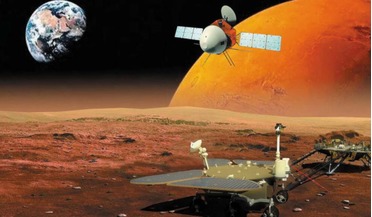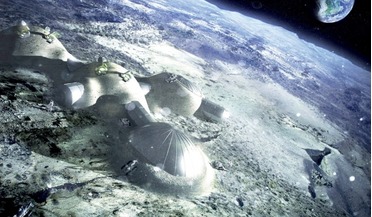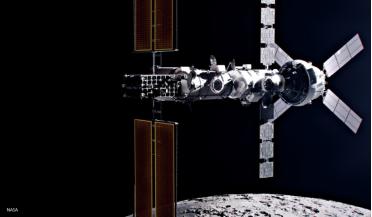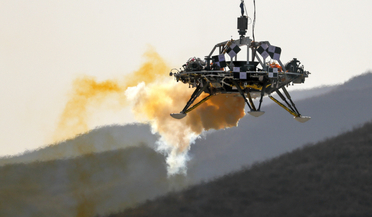 14 May 2021
China is about to land its Zhurong rover on Mars
14 May 2021
China is about to land its Zhurong rover on Mars
... the largest recognised impact basin on Mars and in the Solar System with an estimated diameter of 3300 kilometres. Utopia Planitia is packed with features such as polygonal cracked terrain and oddly-shaped, rimless pits called “scalloped depressions...
 23 November 2016
Massive ice deposits found under the surface of Mars
23 November 2016
Massive ice deposits found under the surface of Mars
...as what's in Lake Superior, largest of the Great Lakes in North America. The scalloped depressions in a region known as Utopia Planitia region, were targeted by scientists when checking for underground ice due to the similarities shared with features...
 10 February 2021
Success for China as Tianwen-1 enters Mars' orbit
10 February 2021
Success for China as Tianwen-1 enters Mars' orbit
... to move 200 metres per hour on Mars. It has scheduled to land in the southern part of Mars' Utopia Planitia, a large plain within Utopia to search for evidence of current and past life. The lander carries six scientific instruments including...
 October 2018
Sustainable ways of living on the Moon and Mars
October 2018
Sustainable ways of living on the Moon and Mars
...’s surface to 11 m depth. NASA also believes that underground ice could be very extensive under the mid-latitude Utopia Planitia area. Using nuclear power to unlock water from excavated ice will be a key technology ambition for NASA...
 April 2025
Racing to the Moon
April 2025
Racing to the Moon
... and the former Soviet Union. A Mars lander (Tianwen-1, implying ‘pursuit of knowledge of the heavens’) touched down on Utopia Planitia and deployed a simple rover Zhurong (‘god of fire’). This made China only the second nation to land...
 15 November 2019
First public test of Mars lander for China ahead of 2020 launch
15 November 2019
First public test of Mars lander for China ahead of 2020 launch
... of gravity is about one-third that of Earth. China has now chosen two preliminary sites on Mars near Utopia Planitia and along with the lander, the country aims to unleash a 240 kilogram solar-powered rover to gather...